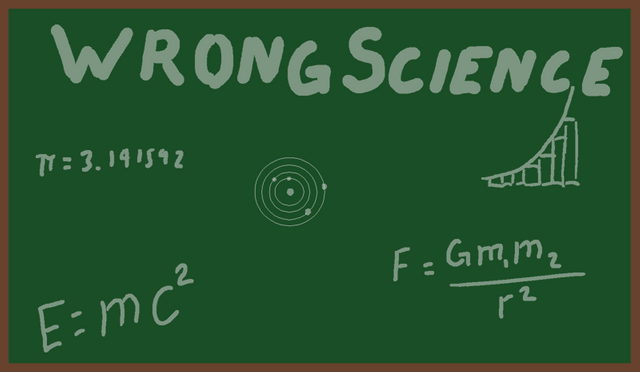
It is no joke that modern physicists have particles on the brain.
Particles made up of smaller particles interacting by transmitting particles.
This is, as some have put it, the grit model of the universe. (everything is grit)
(As opposed to a field view of the universe, like aether theories.)
However, their is a weird thing about the universe, "If you search for it, you will find it". Thus, if you are only looking for particles, will you find them?

The Double Slit Experiment.
So, physicists have found that if you shoot a stream of photons or electrons (tiny particles, supposedly) at a slot, you get a pattern behind it like you would expect, a slightly larger, more fuzzy slot. Like if you were firing a stream of tennis balls at a hole, they would go through and strike the opposite wall, with a few hitting the edge and deflecting sort of thing.
You would expect, if you have two slots, and you were firing bunches of tennis balls at them, then you would expect to get two, slightly larger, more fuzzy slot patterns. However, when you do this with photons or electrons, you do not get two spots, you get a wave interference pattern.

The electrons or photons go through the slits and act like waves, causing a wave interference pattern.
So, photons are waves? They looked like particles just before.
But, we must go further. We can't make any conclusions yet. There is more strange phenomena ahead.
The physicists tried firing one electron at a time at the double slits. One electron would surely not interfere with itself. But it did. Repeatedly firing one electron caused an interference pattern to show up (composite picture).
Then the physicists worked on telling which slit the electron went through, and this resulted in having two slit shaped spots where the electrons hit.
Yes, you heard that right. Trying to view where the electron went made the electron start acting like a particle. Without this, it acted like a wave.
And things get worse, if you look at the photon in the future, it will act like a particle in the past.

Looking for subatomic particles.
Now, for more crazy woo in physics.
Quantum physicists were looking for quarks. And they found them.
The strange part comes about with the interns.
So, the watching of the experiment (long, boring jobs) fell to interns. And the interns would watch the experiments and they would always get 1 of 4 of the major quarks. None of he myriad of quarks envisioned.
That is, until they stopped having the interns watch the experiment. Then they got all the myriad they theorized they would.
Just the interns paying attention to the experiment caused it to change.
This brings up many questions about how our universe actually works.

Do atoms exist unless we look for them?
A table acts like a table, unless we start looking too close. Then we notice things like stuff put on the table doesn't actually touch the table.
We have all kinds of atomic models of blocks of metal/atoms forming matrices. (often looks like a honeycomb, for example) And this all looks nice and uniform, except the edges. (where slicing a honeycomb at most any point or angle leaves a lot of atoms just sticking out with no support)
So many questions arise. Like, how did we make the table in the first place? How did we cut the wood? Do the molecule get broken apart? How does one get removed and the other, next to it, stays? Things get really silly in the atomic world.
However, a furniture maker doesn't spend any time worrying about atoms and molecules. His sharp chisels cut easily through the wood, removing what is not needed for the finished piece.
The things a furniture maker does is almost, ludicrously, impossible when we theorize about the world of atoms.

It is quite possible that atoms do not exist unless we look for them. Salt water doesn't appear to be a bunch of salt ions floating around in a bunch of H₂O bouncing around in a jar, it is salt water.
And if we take that and apply it to our physics, we might see that all of our physics is based on our predilection to call everything grit. If we think everything is grit, we find grit. (or the universe shows us grit)
If we look for emergent waves, we will probably find those.
Instead of arguing over if a photon is a wave or a particle, we may need to look more deeply about how we think of things. A photon, if it is a particle, can only be so when near an observer. Else, there is too many photons in the universe, and we should have baked to a crisp.
And, if we add that humans have the power to affect matter with their minds, then is it our thoughts we are seeing, or the matter?
Humans have a huge learning curve ahead of us. The physics teachers talk like we know everything, and are just trying to pin down the edges, however, our physics is no where close to understanding anything. We haven't even truly began to explore the aether. In fact, most physicists are sure the aether doesn't exist.
Interesting times ahead.
